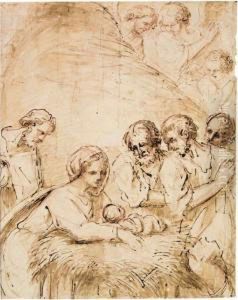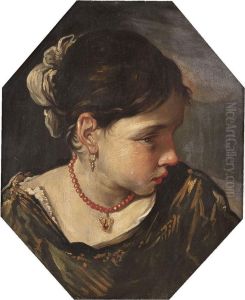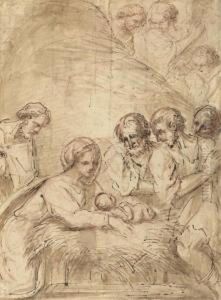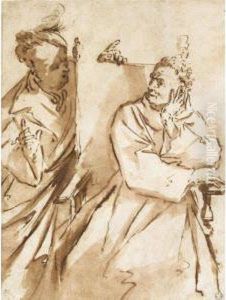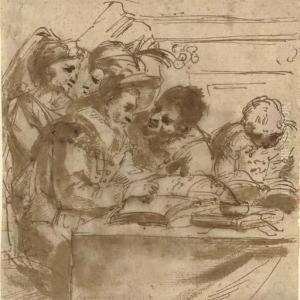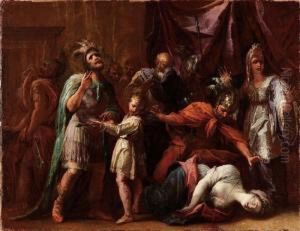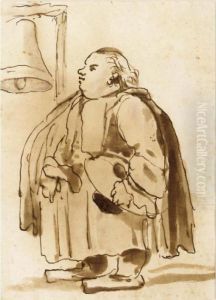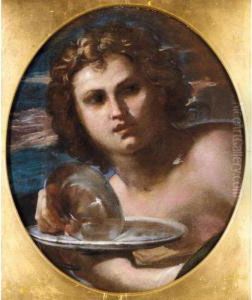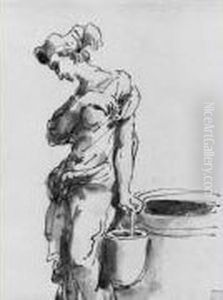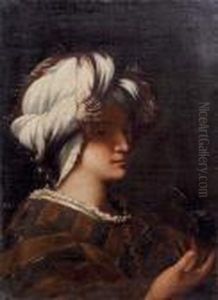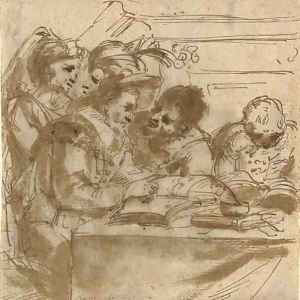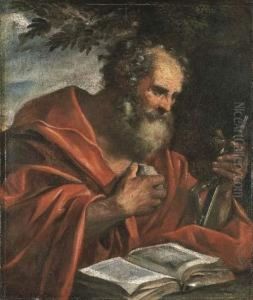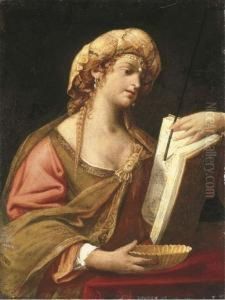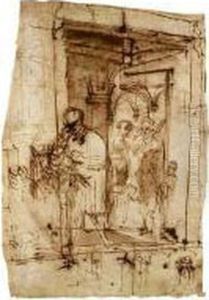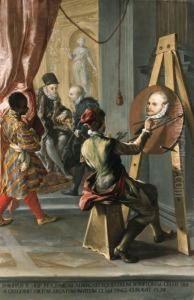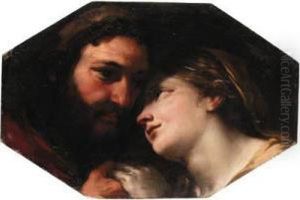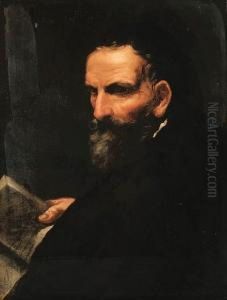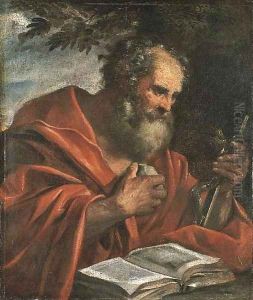Gian Antonio Burrini Paintings
Gian Antonio Burrini, also spelled Burini, was an Italian painter of the Baroque period, born in 1656 in Bologna, Italy. He is known for his exuberant style, rich color palette, and dynamic compositions which reflect the influence of the Bolognese School and the legacy of the Carracci.
Burrini was a pupil of Domenico Maria Canuti and later studied with Lorenzo Pasinelli, who helped him develop his skills in painting. Burrini's early works reveal the influence of his teachers, but he soon developed his own distinct style. After his initial training, he was also influenced by the works of the Venetian painters, particularly the vivacious color schemes and painterly techniques of Veronese and the Bassano family.
Throughout his career, Burrini worked on various commissions for religious institutions and private patrons. He painted altarpieces, frescoes, and easel paintings that often depicted religious and mythological subjects. His works are characterized by an energetic use of light and shadow, a mastery of fresco technique, and a preference for dramatic narratives.
One of Burrini's most significant contributions was in the realm of fresco painting. He completed important fresco cycles in Bologna, such as those in the Palazzo Sagredo and the Palazzo Fava. His frescoes are noted for their illusionistic effects and the sense of movement they convey, which was a hallmark of the Baroque style.
Burrini's work was part of the broader movement in Italian Baroque painting, which sought to evoke emotion and passion through art. His dynamic compositions and strong contrasts of light and dark exemplify the Baroque interest in expressive content and theatricality.
Despite his success, Burrini's life was not without difficulties. He faced some financial struggles and competition from other artists of his time. Nevertheless, he maintained a successful career and continued to receive commissions until his death in 1727.
Gian Antonio Burrini left behind a body of work that is appreciated for its artistic vitality and contribution to the development of Baroque painting in Bologna. His paintings and frescoes can still be seen in various churches and palaces, serving as a testament to his skill and creativity as a Baroque artist.
